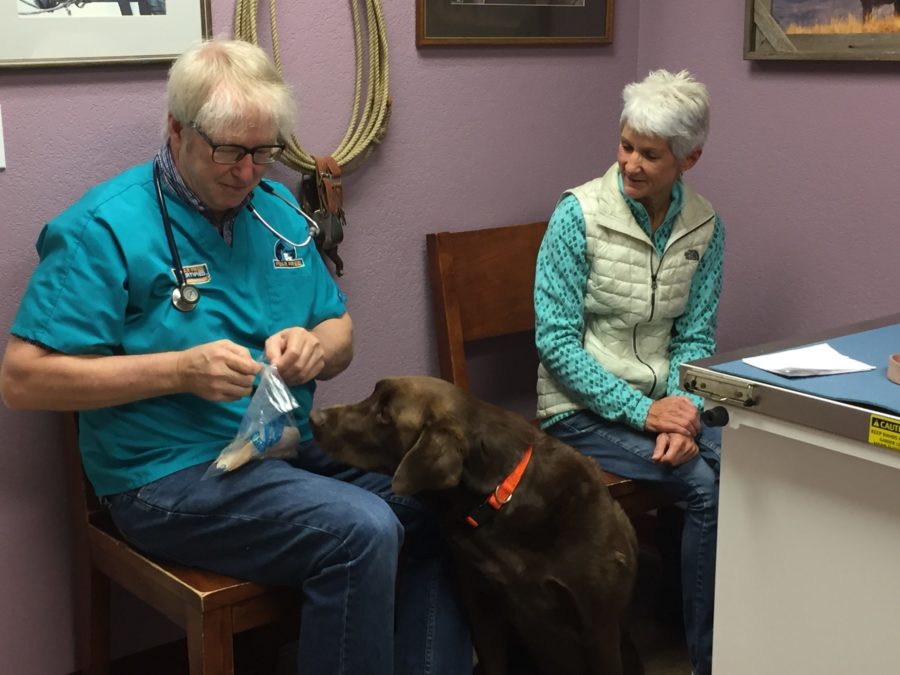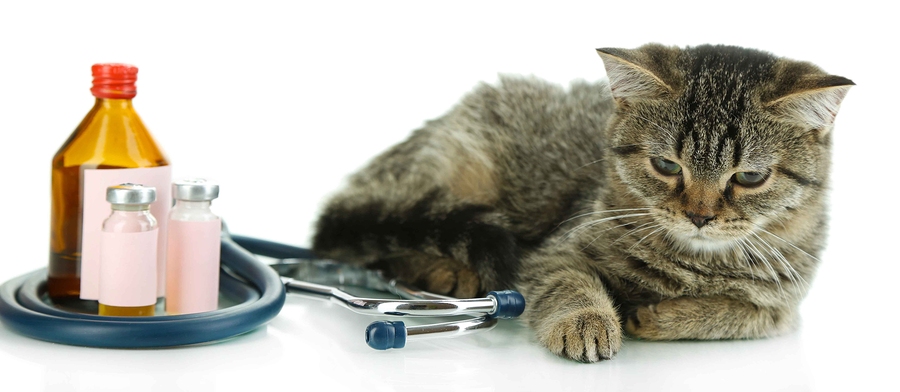Kim Campbell ThorntonAt University of Florida, Julie Levy, DVM, DACVIM, DABVP (Shelter Medicine) focuses on the health and welfare of animals in shelters, humane methods for cat population control, and feline infectious diseases.
One of her successes in the latter area is determining the most reliable and effective way to test cats for FeLV, a disease for which approximately three to four percent of cats in the United States test positive each year. The diagnosis affects an estimated 60,000 cats in animal shelters annually. And until recently, the diagnosis has frequently been a death sentence for cats.
In a study published last year in Journal of Feline Medicine and Surgery, the researchers—who included Dr. Levy—state “Overpopulation of cats in shelters, combined with limited shelter resources, apprehension about viral transmission and preconceptions about how FeLV infection may impact quality of life or adoption potential often lead to routine euthanasia for shelter cats following a single positive FeLV test.”
But their findings suggest a high national demand for a lifesaving option for cats diagnosed with FeLV and have made a difference for cats in several ways. One is that the recommended options for testing have been pared down to a small menu of the most accurate and cost-effective tests.
“In the past, veterinarians and shelter managers were confused about what kind of sample they should collect from cats, what tests they should run, and how much they could trust the results. There are so many point-of-care and laboratory options that it could be overwhelming,” Levy says. “Our work with naturally infected cats in animal shelters has helped us address outdated dogma and to streamline testing .”
That’s important because more and more shelters are working to place FeLV-positive cats in homes. Levy’s interest began because in the past, cats who tested positive for FeLV were often routinely euthanized. Because of that dire consequence, she says, testers were so fearful of misdiagnosing cats that they often ran multiple tests, sometimes with varying results.
And the disease, which suppresses a cat’s immune system, does not run a straight course. It affects different cats in different ways and at different times. Levels may change over time depending on a cat’s immune status. Some cats live with the disease with little problem. It may flare up if the cat is stressed or has a comorbidity such as an upper respiratory infection and then die back down. It’s not possible to run a test once and then expect the cat to remain the same throughout life. Accepting that screening for FeLV is often fraught with a level of uncertainty, Levy suggests pairing a simplified testing process with a goal for saving cats regardless of the results.
“Let’s just identify these cats as infected or not infected as best we can and then get them into the right homes and support them and not try to achieve some level of control or absolute knowledge that isn’t attainable,” Dr. Levy says.
But why would shelters place cats infected with a disease that is commonly considered a death sentence?
Because life-saving protocols and good guidelines for adopters mean that FeLV is not necessarily a death sentence. And because people are willing to adopt cats with FeLV and give them the care they need.
The adoption study showed high national demand for a life-saving option for cats diagnosed with FeLV. In it, researchers state: “The majority of cats referred to the FeLV program were adopted, demonstrating that programs centered on adopter education and post-adoption support can create lifesaving outcomes for most FeLV-infected cats, despite uncertainty regarding their long-term prognosis.”
The study also noted that FeLV infections could not be confirmed in approximately one in five cats referred to a large FeLV adoption program, a reminder of the risk of basing a cat’s fate on a single positive test result.
That FeLV adoption program, begun by Austin Pets Alive!, was the springboard for Levy’s research to identify the most practical testing protocols.
In collaboration with IDEXX and APA, which places hundreds of FeLV-infected cats from around the country each year, University of Florida researchers enrolled 130 infected cats who were fostered, tested monthly, and then followed over time. Previously, many small studies had evaluated one test at a time, but none had compared so many different tests at the same time, in the same cats, repeatedly.
“That has allowed us to determine what the more reliable tests are and to evaluate how the status of cats changes over time,” Dr. Levy says. “It changes a lot more than we expected.” They were also able to evaluate the survival rate of cats in relation to their test results.
Originally, the study was not expected to run for more than a year, a year funded by $160,000 from Maddie’s Fund, plus professional time contributed by researchers, testing donated by IDEXX, and discounted testing from other laboratories. But the researchers recognized the value of the information they were gathering and knew they would never be able to repeat it. They didn’t want to lose track of the cats or of the very engaged group of cat owners who wanted to help.
Support from ECHF allowed the study to continue beyond that first year. Vicki Thayer, DVM, then executive director of ECHF, thought the work was important enough to support and put through an out-of-cycle proposal to ensure they could continue the work. The funding allowed staff to spend time staying in touch with the cats and to complete another two rounds of testing for a year for some longer-term results.
“ECHF has always been so tuned in to the emerging needs of cats and the emerging research opportunities,” Levy says. “This is a great example of recognizing a critical moment in time for cats on a critical disease that was killing a lot of cats, either medically or because of inappropriate euthanasia.”
Four years later, the cats are part of the largest group of infected cats that have been followed for the longest period of time. They are real-world cats under real-world conditions.
The result is a new test available through the IDEXX commercial diagnostic lab that can not only provide confirmation of infection but also information about the cat’s prognosis. Using a new quantitative PCR test, shelters can now identify whether a tested cat is likely to be a long-term survivor or develop disease and mortality early. The study also found that whole blood is the best sample for testing, rather than serum or plasma. That’s good news because whole blood doesn’t have to be processed before it’s tested.
Levy recommends using a high-quality point of care test in a “one and done” screening process for most newly acquired cats and then managing the cat appropriately according to the test results. Shelters or practitioners who want to go to the next level of testing—to follow up on a positive screening test or to screen blood donor cats, for instance—can choose the quantitative PCR, a DNA test that identifies the extent to which a cat is affected by FeLV. The long-term follow-up study by the University of Florida study showed that if there’s a lot of FeLV when cats are first diagnosed, they are more likely to develop early disease and to have a shorter lifespan.
And “manage appropriately” doesn’t mean euthanize. But that message still needs to get out to veterinarians. Too often, cats with FeLV are stigmatized as poor risks for adoption when in fact their condition can be supported like other chronic diseases. The retrovirus is impossible to cure, but a cat with FeLV can live for many years without illness and without spreading the disease to other cats if they are adopted into single-cat homes or with other FeLV+ cats.
“We need to do a better job of sharing the life-saving paradigm with veterinary practitioners,” Levy says. “It is very frustrating to place an FeLV+ cat with an informed adopter, only to have their veterinarian convince them that the cat should be euthanized,” Levy says. “That’s just very old school thinking.”
In fact, the Association of Shelter Veterinarians and the American Association of Feline Practitioners do not support euthanasia based solely on a cat’s infection status.
The assumption is that people won’t want to adopt cats if they don’t know how long they’re going to live or if they might require expensive treatment toward the end of their life. That’s frustrating to Levy.
“People adopt old dogs or dogs with medical conditions all the time,” she says. “They’re like, ‘Yes, this animal needs a home. I like him. Nobody knows what the future will bring. And even if he has only a few years left in life, he’s a good dog for me, and I want to be there for him.’”
They feel the same way about cats with FeLV or other diseases such as FIV, she believes. Those are often young cats who are healthy in the moment, enjoying life, and are great companions. In an adopter satisfaction survey, 74 percent of respondents had a “very positive” experience living with an FeLV-positive cat adopted from APA and 21 percent had a “positive” experience; 73 percent were “very likely” to adopt a FeLV cat again and 11 percent were “somewhat likely” to do so.
The shelters that are starting adoption programs for cats with FeLV are proving Levy’s point, using creative and fun programs to place the cats.
“Very often, the thing that tips a shelter over to trying it is when a favorite cat turns up positive or a foster home ends up with a positive cat and they can’t possibly euthanize it,” Levy says. “So they take this ‘dangerous’ step of adopting it out and it goes so well. They’re like, ‘Oh my gosh, why didn’t we do this sooner?’”
That’s what happened at Tree House Humane Society in Chicago. A foster caregiver raised some neonatal kittens who tested positive later and no one could bring themselves to euthanize them. They adopted them out and the adoptions were so successful that they now feature FeLV cats at their new cat café. They are popular adoptees thanks to good education and public relations. A cat café in Seattle has a similar program, focusing on FeLV cats from local shelters.
The Austin model provides good data on the viability of such adoption programs, especially when they are combined with the education and support of local veterinarians, as well as how to put them in place. The programs create optimism and enthusiasm for saving cats who could be considered some of the most vulnerable in the shelter system.
“We need to be better at providing the continuing education to private practitioners, so they also feel this optimism about caring for these cats,” Levy says.
This article was reviewed/edited by board-certified veterinary behaviorist Dr. Kenneth Martin and/or veterinary technician specialist in behavior Debbie Martin, LVT.
Kim Campbell Thornton is content manager for Fear Free Pets and is an Elite Fear Free Certified Professional. She has been writing about dogs, cats, wildlife, and marine life since 1985 and is a recipient of multiple awards from the Cat Writers Association, Dog Writers Association of America, and American Society of Journalists and Authors. When she’s not writing or editing, she’s snuggling with Harper and Keeper, her Cavalier King Charles Spaniels.

![]() Sponsored by our friends at Zoetis Petcare. © 2021 Zoetis Services LLC. All rights reserved. NA-02588
Sponsored by our friends at Zoetis Petcare. © 2021 Zoetis Services LLC. All rights reserved. NA-02588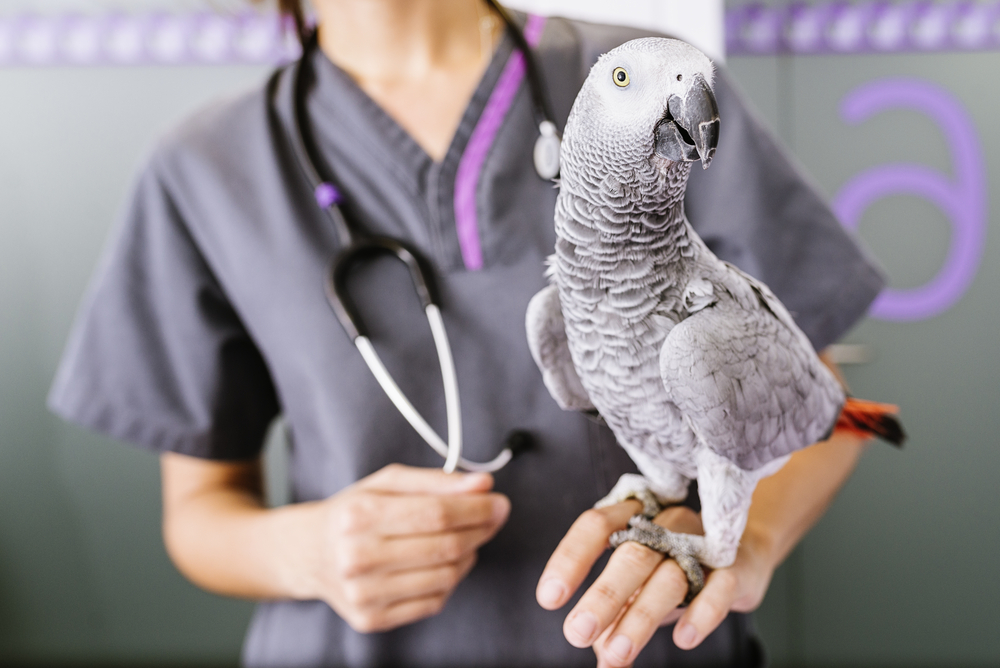

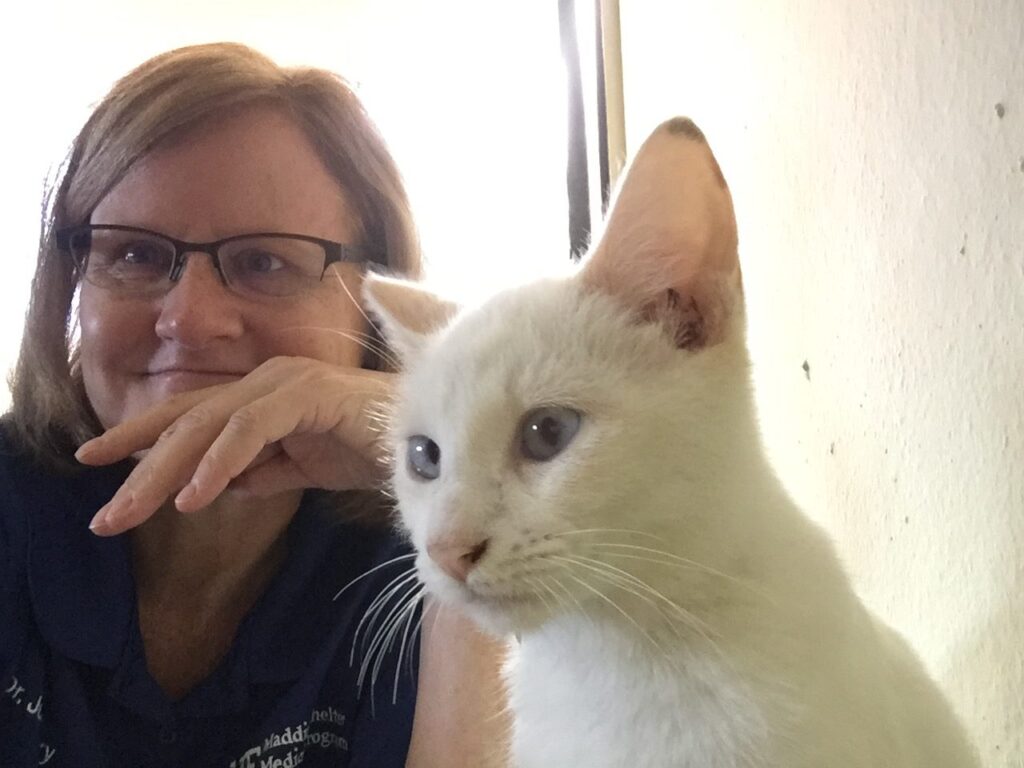
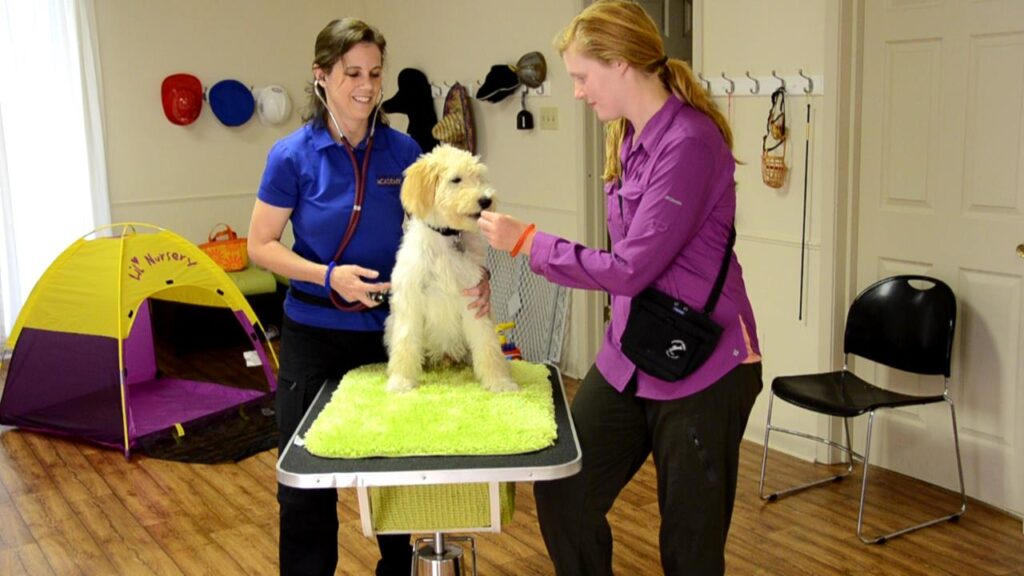
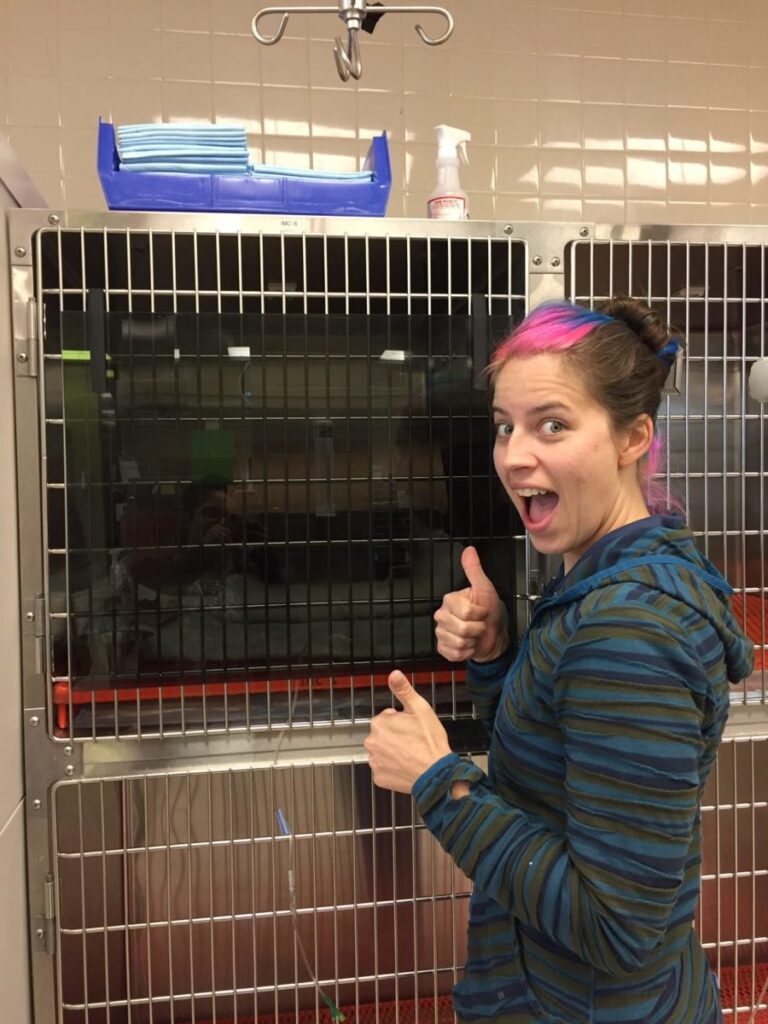
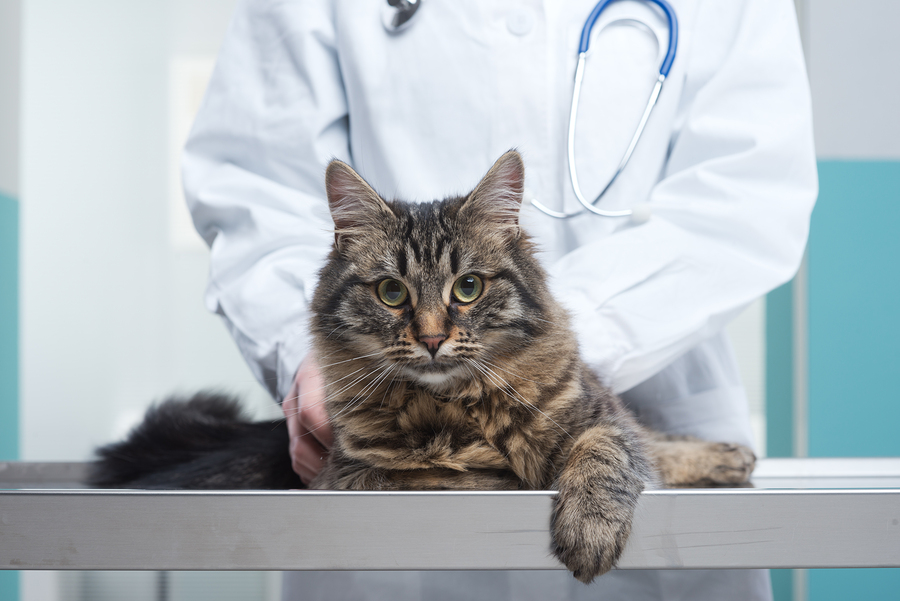

 the mucosa, and the inner surfaces of the lips. Because it’s so painful, a dog may have difficulty eating and be reluctant to open the mouth. This can result in weight loss. Other typical signs include fetid breath, thick, ropey saliva, blood-tinged saliva, visible irritability, depression and lethargy, and pawing at the mouth.
the mucosa, and the inner surfaces of the lips. Because it’s so painful, a dog may have difficulty eating and be reluctant to open the mouth. This can result in weight loss. Other typical signs include fetid breath, thick, ropey saliva, blood-tinged saliva, visible irritability, depression and lethargy, and pawing at the mouth.